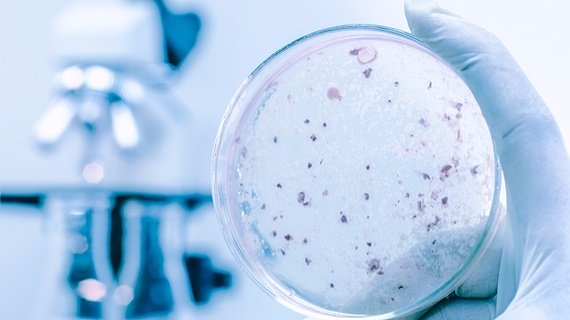When you’re trying to establish where some bacteria might have put down roots within certain infrastructures, at least you get two bites of the cherry when applying the pre and post-flush water sample principles keenly advocated when you suspect legionella might be at play. Or even when it’s not given you reason to be proactive, it makes a great deal of common sense to apply the theory and practice defined by pre and post-flush water sample protocols outlined further in this blog entry.
For those unfamiliar with either the terminology – or more importantly – the process (of targeted elimination), then the following paragraphs will explain just what pre and post-flush water sampling for legionella comprises of. Although for businesses who’ve been subject to a TACC/TVC sample being taken in recent times, then you’re probably have a heightened awareness of why pre and post-flush water sampling is the next, crucial step of the journey in identifying – and subsequently going on to eliminate - any latent threat presented by the existence of legionella bacteria.
So, Tell Me the Difference Between Pre and Post-flush Water Sampling
Serving as a good a starting point as any, the most rudimentary explanation as to what a pre-flush sample consists of, is as follows. The premise centres round a sample being taken from a water outlet as normal, before the tap closest in proximity to where the sample has been collected is turned on. The practitioner than allows for the water to course through this part of the system for roughly 2 minutes in duration, prior to administering a sterile wipe to determine if there’s any circumstantial evidence at play, post-flush.
Essentially, if there happened to be localised bacteria living on the tap itself, the sterile wipe would be able to identify this as a potential source and moreover be a means of isolation. In the event that the post-flush samples returned with similar (or increased) values than the pre-flush samples, then this action in itself would point towards a potentially system-wide issue that required resolution such as a chlorination.
What Other Protocols Would be Applied in These Scenarios?
Chances are that water treatment specialists would carry out the same test and in-situ analysis on another outlet within the property where a legionella risk has been mooted; as a way of confirming suspicions. Providing another outlet’s scrutiny came back with a high count being observed, then a more educated recommendation would be made at that juncture. Meanwhile, if there’s reason to believe that bacteria is a clear and present danger somewhere in the internal water storage infrastructure of a building, then it’s commonplace for samples to be collected straight from the cold water tank itself; and/or the calorifier or the incoming mains pipework for that matter.
You might ask as to why the flushing of little used taps (and showers) is universally recognised as a key identifier in ascertaining legionella traces. The predominant reason being that bacteria will replicate and disperse far more rapidly in stagnant water, than in water which regularly transits through a system. Hence where the overriding flushing aspect is hugely relevant in defining the status and possible severity of an impending legionella situation.
Hotels and Rented Properties Which Have Periods of Inactivity Maybe Prone to Legionella
For instance off-season periods in the life of an average hotel, where rooms are uninhabited for a longer passage of time and subsequently water isn’t flushed through the system and via the outlets to those particular rooms. This down time could, potentially allow the build-up of bacteria to take effect and obviously go unnoticed. Therefore it’s imperative that plans should be instigated to ensure that little-used water outlets (such as taps and showering facilities) are thoroughly flushed through; with a time schedule of once a week being suggested by water treatment specialists.
It’s not just hotels which may fall victim to legionella in this setting, as any properties left empty for a while could be preyed upon by legionella, worst case scenario. We’re referring to rented accommodation where future tenants may find themselves completely in the dark about any bacterial infestation which goes below the radar. After several weeks or months lying dormant, where water isn’t flushed through the system/outlets, this lack of use might become a flashpoint which will need addressing.
Labelling is Important Part of Pre and Post-flushing Water Sampling Process
Appropriate attention and due care should always be given to the labelling of the water samples at both pre and post-flush stages too, we hasten to add. Should legionella be detected in the system – likely even at very low and manageable levels, it needs to be noted – differing concentrations will be duly witnessed dependent on whether the sample was collated at pre or post-flush. Ergo, labelling these separate samples is paramount, so all parties are aware of when and where they were taken. The same levels of monitoring and recording of data applied to legionella risk assessments are needed when getting to grips with pre and post-flush water sampling; in as much as the devil is in the detail.
Naturally, it’s in everyone’s best interests to adhere strictly to the protocols enforced by the Health & Safety Executive (and cemented in its legionella code of practice and guidance documentation) when it comes to pre and post-flushing sampling. Not least in terms of the overall benefits and peace of mind which come as a by-product. Flushing out of systems per se is a crucial element in the fight against legionella bacteria. And whilst it may not always be needed at the time, the difference between managing responsibilities of this nature and magnitude and not (the result of which could readily see bacteria multiplying out of control and therein sparking a significant risk to public health) is both immeasurable and far-reaching.







